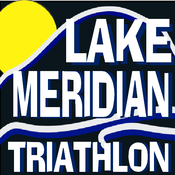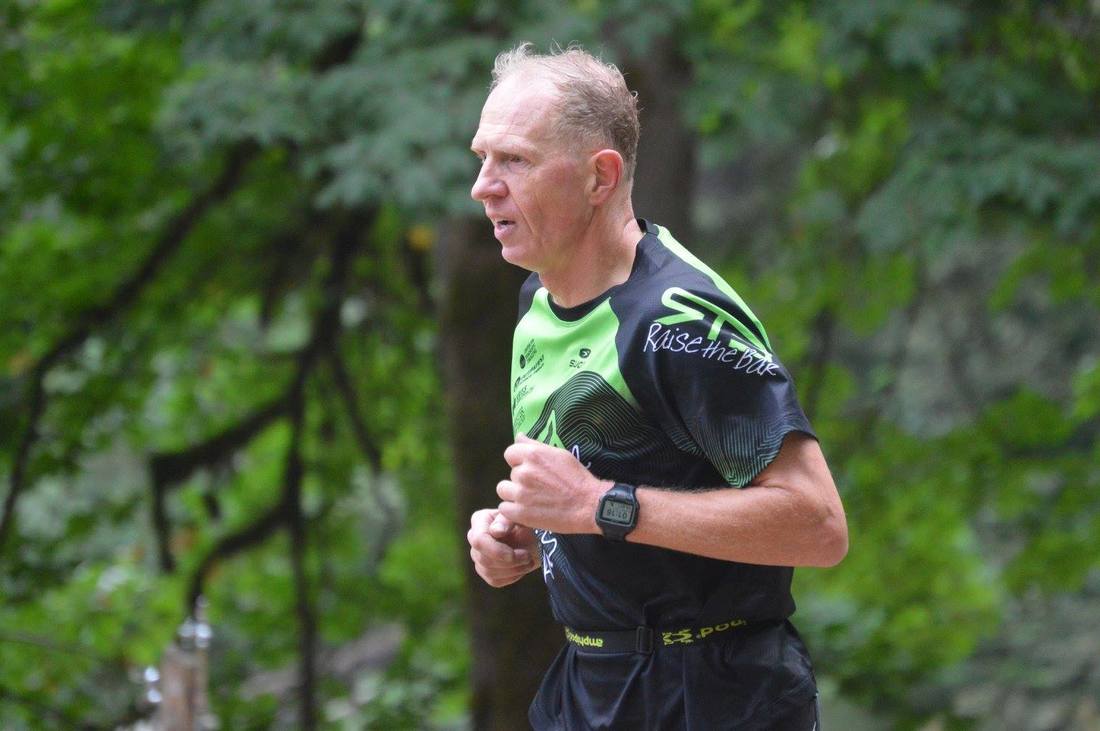 Most people know that if, God forbid, you are out jogging, cycling or walking legally and are hit by a car, you would have a strong claim against the driver and his/her insurance company. What most people don’t know is that, despite laws requiring pedestrians to follow basic traffic laws like using crosswalk signals, etc. if you are ever hit by a car when out of compliance with such laws, the driver may still be “at fault” and his or her insurance may cover any injuries you suffer. This is because in Washington drivers are expected to “lookout” for pedestrians at all times. The law recognizes that pedestrians are vulnerable, and drivers must exercise due care to avoid striking runners and walkers. It is not uncommon for pedestrians, especially runners, to put themselves at risk. They might take calculated risks of crossing streets when traffic appears light, or proceeding through an intersection even though their walk sign is very stale. Even though the law requires pedestrians to use crosswalks, cross before it times out, and to avoid crossing at uncontrolled areas of the road, if a car contacts the pedestrian, the law still scrutinizes the driver. That’s not to say runners shouldn’t be careful. All pedestrians have a duty to avoid creating surprises and hazards for drivers. For example, running into a roadway from behind a view-blocking hedge near a street corner is always a bad idea. On the other hand, if you are running and decide it is safe to cross a street (even if you don’t have the right of way), the law is on your side if the driver simply isn’t paying attention. In other words, even though the law requires pedestrians to use crosswalks and cross them in a timely fashion, if a car contacts the pedestrian, the question will be, “was the driver on the lookout for people who might be on the road?” The lookout doctrine was created to protect runners and other pedestrians. Because drivers are expected to be on the constant lookout for hazards, including runners, in many situations the law will hold the driver responsible at least in part, despite risky pedestrian behavior. In court, the parties argue over what percent each of the parties were at fault. In fact, the doctrine is called “comparative fault.” This article should not be taken as a license to increase your risky behavior while training but it’s important that if you or someone you know is injured, there may be a claim. Of course, the law will be applied equally, so this article should also serve as a reminder to all of us to be on the “lookout” when we are behind the wheel. Lance Hester is a lawyer for the Hester Law Group, one of RTB's sponsors.. The Hester Law Group covers cases dealing with Personal Injuries, Criminal Defense and DUI's. Find more on them HERE.
MRIs are performed by experienced, certified technologists. The images are read by subspecialized radiologists to diagnose a variety of medical conditions and a report is sent back to your medical provider. Once you have your diagnosis, your medical provider can create a treatment plan and get you back on your fitness path.
How to Avoid Injuries
It would be nice to avoid injuries completely, but with intense training there is always a risk. Many athletes are now turning to Crossfit to gain an extra edge. CDI’s Viewpoints article has some helpful insights from an orthopedic surgeon and our very own radiologist, Dr. Steven Pollei, about what can be done to avoid common injuries when engaging in these more intense workouts. Precautions can be made to avoid injuries and keep you on the path you’ve worked so hard to be on. Center for Diagnostic Imaging (CDI) offers a variety of MRIs throughout Puget Sound. If you have questions about the procedure or if you want to schedule an appointment, call CDI at (855) 643-7226. This article was submitted by Center for Diagnostic Imaging. Learn more about CDI and their nine outpatient medical imaging centers throughout the Puget Sound at www.myCDI.com/WA. The athletes and staff of Raise the Bar's Team and Events are happy to be partnering with CDI for a second year in 2016. CDI has diagnosed and treated dozens of athletes at their Imaging Centers. 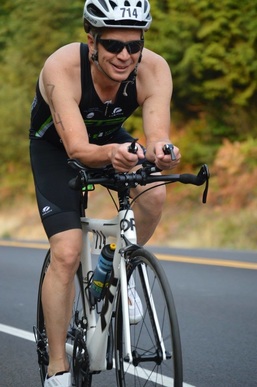 When Kathy asked me to write something for the newsletter on “Why I Tri”, my first thought was “Kelli (my wife) asks me that all the time – it’s about time I figure it out!” I’m still working on it… The easier question is “Why did I start doing triathlon?” That decision was inspired by a trip to the Overlake Hospital emergency room in December 2013. I was brought in with chest pains. The doctors quickly determined it wasn’t a heart attack – it was probably a bad case of acid reflux – but discovered I had a bunch of risk factors for coronary artery disease. I had all the classic indications of metabolic syndrome – over weight, high blood pressure, high cholesterol (the LDL/HDL ratio was also bad), and marginal blood sugars. I also had an unfortunate family history. My father had a heart attack at age 56. I was 54. The cardiologist said bluntly “if nothing changes you will have a heart attack within a decade”. I needed to lose weight and start exercising! My go-to exercise was always running. I’d never really been a competitive runner, but I’d run most of my life for fun. In college, my friends and I would run 3 or 4 times a week and then run 10K races on the weekends. Our pre-race preparation consisted of “carbo-loading” – pizza and beer (mostly beer). Those that did the most “carbo-loading” were in for a rough race! At work I always ran with my co-workers at lunch. We’d run 6 or 8 miles while discussing a difficult problem we were having with our analysis software. That continued up until my early 40s when I hurt my knee. The knee healed but I was unsuccessful at restarting the running. It’s not that I didn’t try to run; I just kept getting hurt a couple weeks after I started. It wasn’t major injuries but, by the time I was healed, I’d lost what little fitness I’d gained during the couple weeks of running. Eventually I stopped trying. Now that I had to exercise again, I started searching the web for ways to run without getting hurt. The search led me to cross-training and eventually to triathlon. One post on Beginner Triathlete sticks in my mind: “If I can’t run I can bike. If I can’t bike I can swim.” Being goal oriented, I also liked the idea of training for specific events. So, Triathlon it was. I knew I could run (when I was healthy), I knew I could ride a bike (slowly), and I thought I could swim. I signed up for the Cottage Lake mini-spring triathlon in June 2014, and the Lake Meridian Sprint Triathlon in August. Now I just needed to start training!  As expected I hurt my leg running after about two weeks. A ruptured plantaris tendon limited me to run/walking the triathlons for most of my first two seasons. As advertised, the ruptured tendon didn’t keep me from biking or swimming so I was able to keep training. My bike fitness was poor, but I knew that would improve with practice. What was surprising was just how poor I was at swimming. On my first attempt I couldn’t swim the length of the pool and it took four months before I could swim the 400 yards needed for the mini-sprint triathlon in June. The open-water swim really worried me and, to a lesser extent, it still does. I’m not sure the swim is my weakest leg in terms of the overall placing in the triathlon, but it is still what causes me the most concern. I’ve always tried to attack my fears head-on, and that’s the approach I’ve taken with the open-water swim. In fact, the reason I joined Raise The Bar in 2014 was to do the Wednesday night swim practices and I’ve found the Friday Night swim races to be a great confidence builder as I’ve stepped up to long-course triathlon. After the first season I was hooked! I did three sprints in 2014, three Oly’s and the Black Diamond half in 2015, and I’m training for the Coeur d’Alene Ironman this August. I’ve lost 40 lbs, from 185 to 145, and my metabolic tests all look great! So, why do I continue tri-ing? Staying healthy is part of it. I feel better than I have in 20 years! It is also great stress relief. Another part is the friends I’ve made in Raise the Bar. The team is full of great group of people and amazing athletes! Just being around people that are striving to achieve such difficult goals makes me want to do better myself. I also thrive on chasing big goals. If I had to choose a motto it would probably be “Anything worth doing is worth doing to the extreme!” Kelli says I “don’t do anything just a little.” When I learned to fly gliders in high school, I wasn’t satisfied until I won the national championship. When I went to college, I kept going until I earned a Ph.D. I wasn’t a natural pilot, or one of the more intelligent people in my class, I was just persistent. I keep working on things, often for years, until I achieve my goals. I’m far from a gifted athlete but, for those working toward completing their first Ironman, I suspect persistence is just as important as natural talent. Ultimately, though, I think I stick with triathlon because I love the training. Training with a group like RTB is great, but it is even great when training alone. The three sports in triathlon all have that magic that I’ve always loved about running. The rhythmic breathing and motion of your limbs, and even the discomfort, help quite the mind into an almost meditative state. The stresses of the day just fade away. I hope I can keep doing this for many years to come! |
Raise the BarRace reports, upcoming events, news, and more, from RTB. Archives
September 2023
|
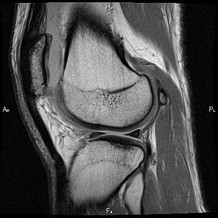
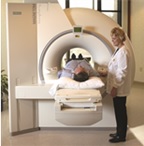
 RSS Feed
RSS Feed
